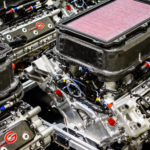Back in 2013, Gibson Technology introduced an apprentice scheme working in conjunction with Learning Unlimited based in Derby. To date we’ve had six apprentices and we thought it would be interesting to interview our latest two young engineers, Tom Mackenzie and Hasnain Majeed, to find out their experience working within Gibson Technology…
What’s your role at Gibson Technology and when did you start?
Tom: At Gibson, my role is to strip and rebuild the sub-assemblies that come off the engines. I started in March 2017 and since then I have moved from cylinder heads to oil and water pumps.
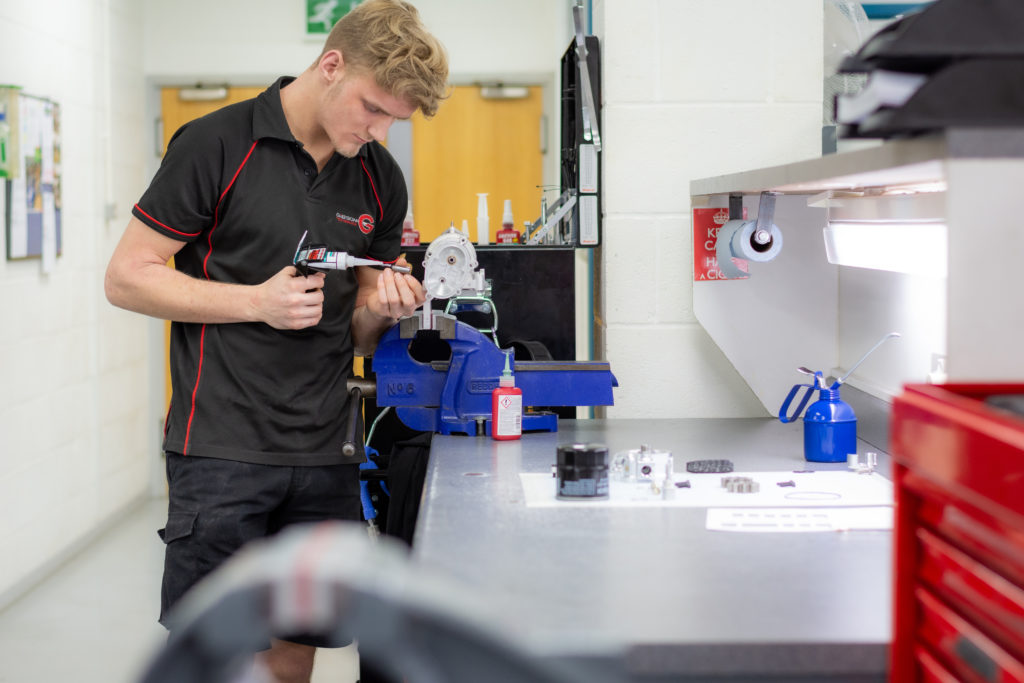
Hasnain: My role at Gibson Technology is apprentice CMM Programmer and I started in July 2018. I work with the other inspectors to inspect parts against the relevant standard which are made in our own machine shop and bought in from suppliers.
Quality control is a very important field for Gibson Technology as it helps to ensure that our engines are made to the high standards needed to maintain our world-famous reliability.
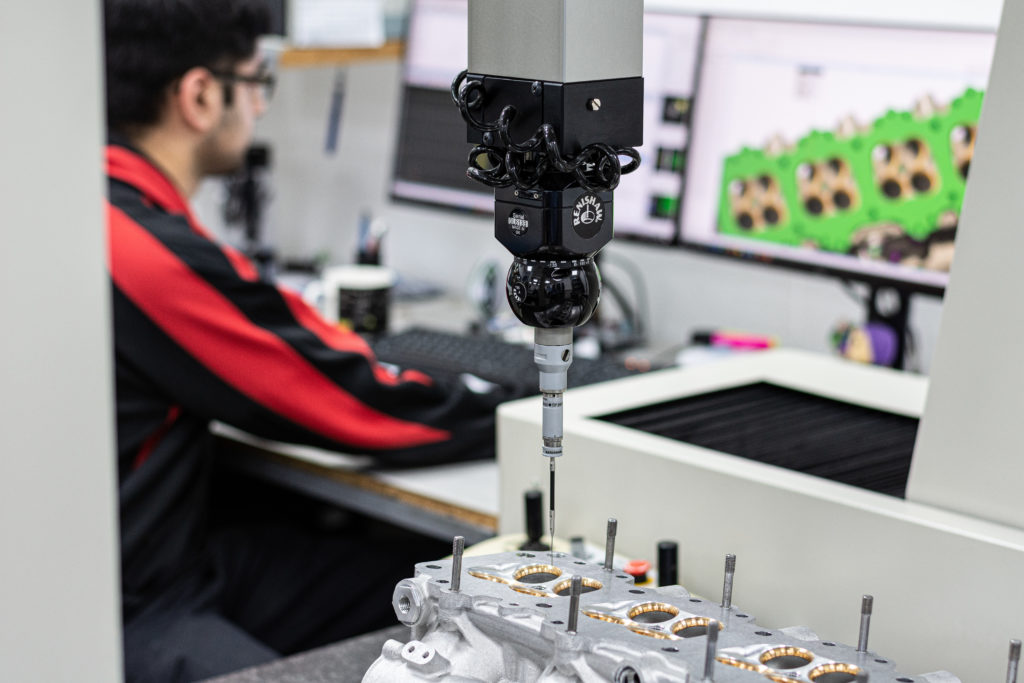
Tell us about your typical day / week at work and what are you studying at college?
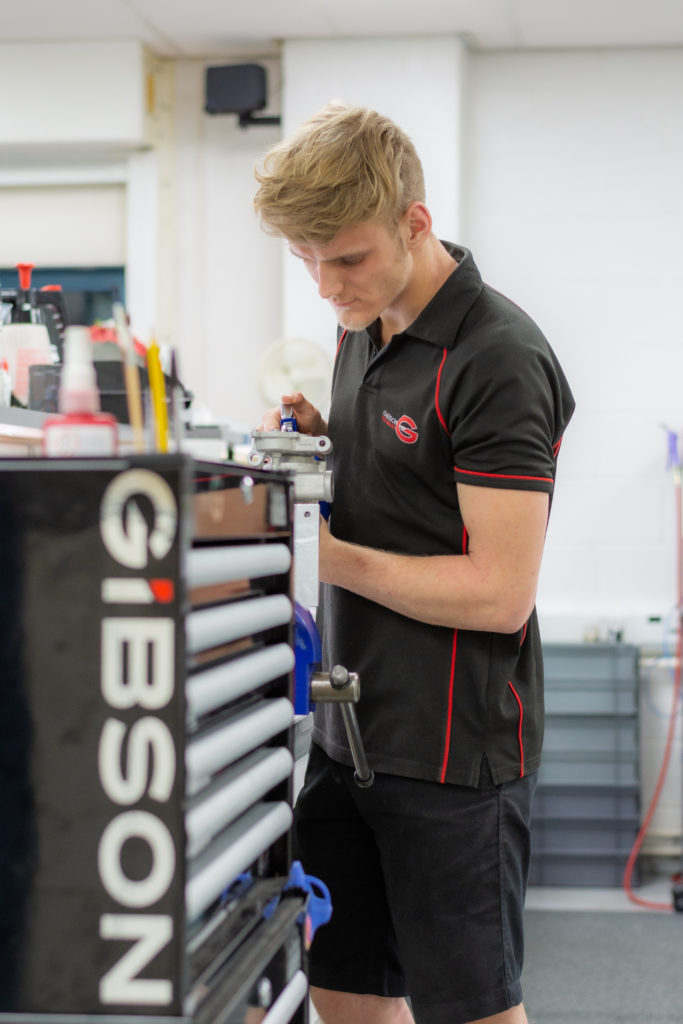 Tom: My typical day at work would consist of getting here at 8:00, if we aren’t too busy, speaking to my supervisor about the work load so that I can plan my time accordingly and work to the deadlines. Then I review what we have spoken about and pick up a certain pair of pumps. I then start to strip down the pumps and a full rebuild on a pair of pumps can easily take me 2/3 days, so I know I always have a task to keep my mind busy!
Tom: My typical day at work would consist of getting here at 8:00, if we aren’t too busy, speaking to my supervisor about the work load so that I can plan my time accordingly and work to the deadlines. Then I review what we have spoken about and pick up a certain pair of pumps. I then start to strip down the pumps and a full rebuild on a pair of pumps can easily take me 2/3 days, so I know I always have a task to keep my mind busy!
With regards to a typical week at work, I would work Mon – Fri 8:00 to 17:00, again, unless we are busy, and then on Fridays we have an entire day dedicated to improving our knowledge and skills by undertaking projects that we manage ourselves. This is to make us more “rounded” engineers and is a nice way of not using us for the stereotypical “cheap labour”.
I do not currently go to college as I finished my BTEC level 3 Diploma in Engineering with a Distinction Merit overall. It was a 2-year course and I am on a 4 year apprenticeship, luckily, with support from people at work, the other apprentice and myself managed to finish in around 18 months. There is the option to go onto level 4 (HNC) and that is what I am hoping to do this year.
Hasnain: My typical working week is Mon – Fri 8:00 to 17:00 and on Tuesdays I go to college. A typical work day for me starts at 8am when the machine shop manager holds a quick meeting. I then get to work in the inspection department alongside the other inspectors. My daily tasks can consist of; writing programs for the coordinate measuring machine (CMM) to check new or modified parts, first article inspection, operating the CMM, manual inspection and receipt inspection of castings or other parts such as pistons. Throughout the year I also get the chance to visit suppliers and carry out offsite inspections, to ensure that the supplier is meeting our requirements. Gibson Technology also helps me to improve my other skills such as problem solving and presentations by giving me time on Fridays to carry out a project.
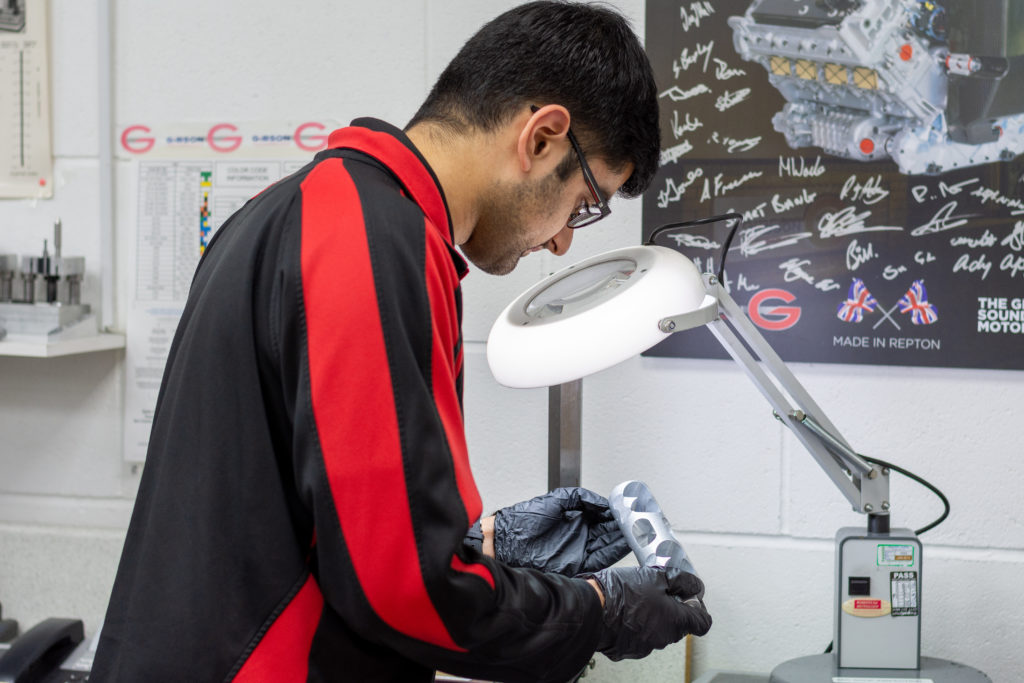
At college I am currently studying for my BTEC Level 3 Diploma in engineering and my NVQ Level 3 extended Diploma in engineering technical support which is work based. I am currently on track to complete these qualifications by August this year after which I hope to start my HNC Level 4 with the support of Gibson Technology. Training at college is mostly classroom based with some practical work in the workshops.
How has Gibson Technology supported you in terms of training and mentoring?
Tom: Gibson has been amazing in terms of support, finding just the right balance. My mentor, Hubert Gallagher (Engine Build Supervisor) has found just the right balance of support. He lets me get on with the problem, and he will only steer me in the right direction. So he doesn’t just tell me all the answers because that’s no way to learn. It helps Gibson Technology and myself in the long run as in my future, I know that I have learned how to approach a problem strategically instead of just always asking someone else for the answer.
With regards to learning how to take apart and put together the sub-assemblies, James Hall (Sub-assembly Supervisor) showed me the standard that Gibson work to. I know I can ask anyone around me for assistance though as everyone has an in depth knowledge about the engines and engineering principles.
You really feel like part of the team as an apprentice at Gibson Technology, which would be contradicted by your stereotypical “give all the rubbish jobs to the apprentice” mindset at some companies.
Hasnain: From my first day I have been given hands on training from Matthew Fisher (Quality supervisor) and Chris Tunnicliffe (Inspector) which has really helped me to develop my skills and confidence in engineering.
My first challenge was to learn how to read and interpret engineering drawings, I started with simple drawings and worked my way through to the highly detailed ones. I was also given training on how to use all the various manual inspection equipment so that I understood the basic principles of measurement. Alongside this I have been given training on programming the coordinate measuring machines and Matthew has been challenging me with progressively more difficult parts to program which has been brilliant for my progress.
Within my first few months I started to be assigned production parts to program, starting with simple parts and working my way through to complex parts with detailed drawings and complex geometry. My colleagues throughout the company are very supportive of me and they are all willing to help me and answer any questions that I may have.
What has been your highlight working at Gibson Technology so far?
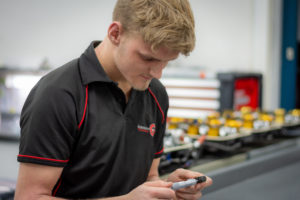 Tom: For me, I got to go on track support to the European Le Mans Series (ELMS) race in Portugal last year. It was around October and I was selected by Bob Baker (Track Support Manager) after my supervisor put my name forward. It was possibly the best week of my entire life, staying in a hotel with other Gibson staff, going to the track every day to assist the teams and see the parts that I make race round a track in some truly awesome cars. I got to spend time on the Gibson truck, analysing the data we downloaded from all the LMP2 cars. I learned what all the different traces represent and was shown what to look out for within the datasets that could cause problems as well as creating my own sheets on the laptop that showed traces that linked together. It was a week I will never forget!
Tom: For me, I got to go on track support to the European Le Mans Series (ELMS) race in Portugal last year. It was around October and I was selected by Bob Baker (Track Support Manager) after my supervisor put my name forward. It was possibly the best week of my entire life, staying in a hotel with other Gibson staff, going to the track every day to assist the teams and see the parts that I make race round a track in some truly awesome cars. I got to spend time on the Gibson truck, analysing the data we downloaded from all the LMP2 cars. I learned what all the different traces represent and was shown what to look out for within the datasets that could cause problems as well as creating my own sheets on the laptop that showed traces that linked together. It was a week I will never forget!
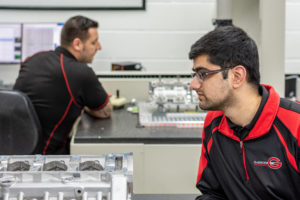 Hasnain: I think the highlight for me so far has to be when my supervisor went on holiday for his wedding. I was given the responsibility of independently running the CMM’s and carrying out other inspection duties such as writing non-conformance reports. At first, I was apprehensive about handling the work load whilst maintaining the high standards of quality assurance, especially as I had only started my apprenticeship 6 months earlier. Throughout the weeks I quickly found myself talking to senior engineers and colleagues from various departments which helped to boost my confidence. It also gave me the chance to work under pressure which helped me to develop my engineering skills as I had to inspect parts which were new to me or out of tolerance.
Hasnain: I think the highlight for me so far has to be when my supervisor went on holiday for his wedding. I was given the responsibility of independently running the CMM’s and carrying out other inspection duties such as writing non-conformance reports. At first, I was apprehensive about handling the work load whilst maintaining the high standards of quality assurance, especially as I had only started my apprenticeship 6 months earlier. Throughout the weeks I quickly found myself talking to senior engineers and colleagues from various departments which helped to boost my confidence. It also gave me the chance to work under pressure which helped me to develop my engineering skills as I had to inspect parts which were new to me or out of tolerance.
Overall, I couldn’t believe how much I learnt about engineering drawings, writing programs and communicating with other engineers in a relatively small amount of time. It also shows that Gibson Technology trusts and supports their apprentices to help achieve their full potential.
Tell us about a project you have undertaken as part of your apprenticeship at Gibson Technology and what you learnt from it.
Tom: We undertook a big 3-month project recently. I was project manager for the engine table that is currently sitting in the waiting room outside reception. We were set with the task of making a coffee table and it may sound easy but there was so much hard work that went into the production and management! I had to plan out the entire project with a timescale and speak to other companies (Such as the glass suppliers and the cosmetic bead blast company). As well as internally negotiating with my supervisor which engine parts we could use! We wanted a “wow factor” for the table, so we went about adding a motor to a crank so that upon the push of a button, the firing order of the pistons would show. It got onto social media and reading some of the comments, it makes me proud and never fails to put a smile on my face!
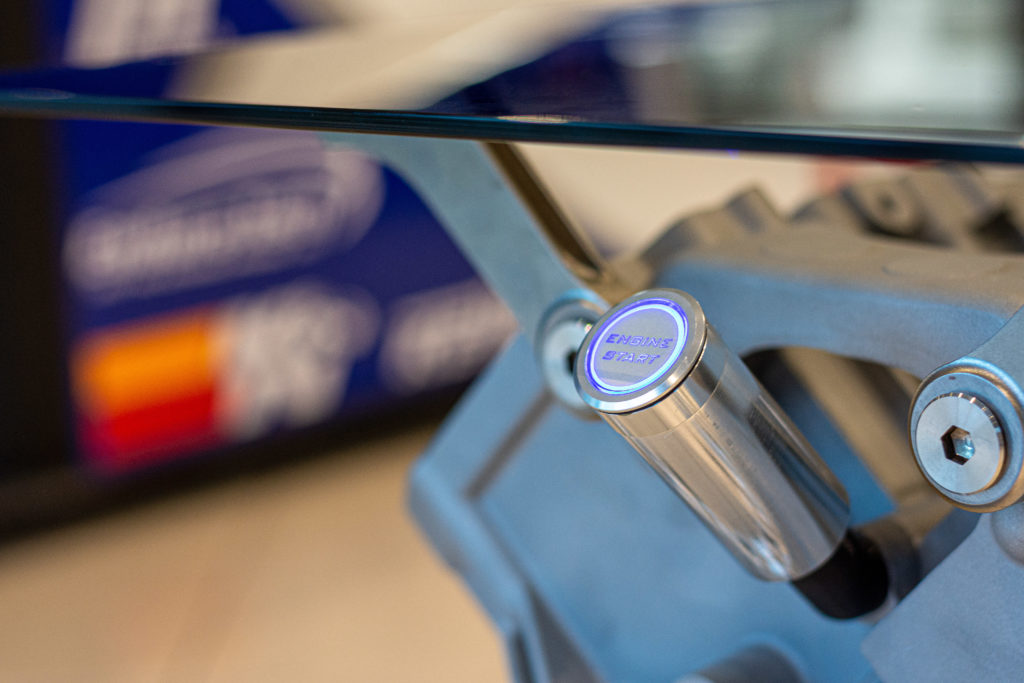
Hasnain: Alongside the other apprentices I was part of a team set with the task to design and build an engine coffee table for the reception area. This was my first major project and I was responsible for finding a way to attach the glass to the engine block and to find suitable legs for the table. Initially I thought it would be a fairly simple task, however the 90° V-shape of our engine meant that I had to overcome many engineering challenges even to attach the glass. As a team we decided that conrods would be a good engine part to attach the glass with. I found myself using and further developing previously learnt skills to analyse drawings and to correctly calculate the angles and heights of the modifications which were needed to make the conrods suitable. I also had to communicate with all levels of staff throughout the project which help improve my confidence and communication skills. Once the engine coffee table was complete, we presented our work to the company directors and their positive feedback made us all very proud.




